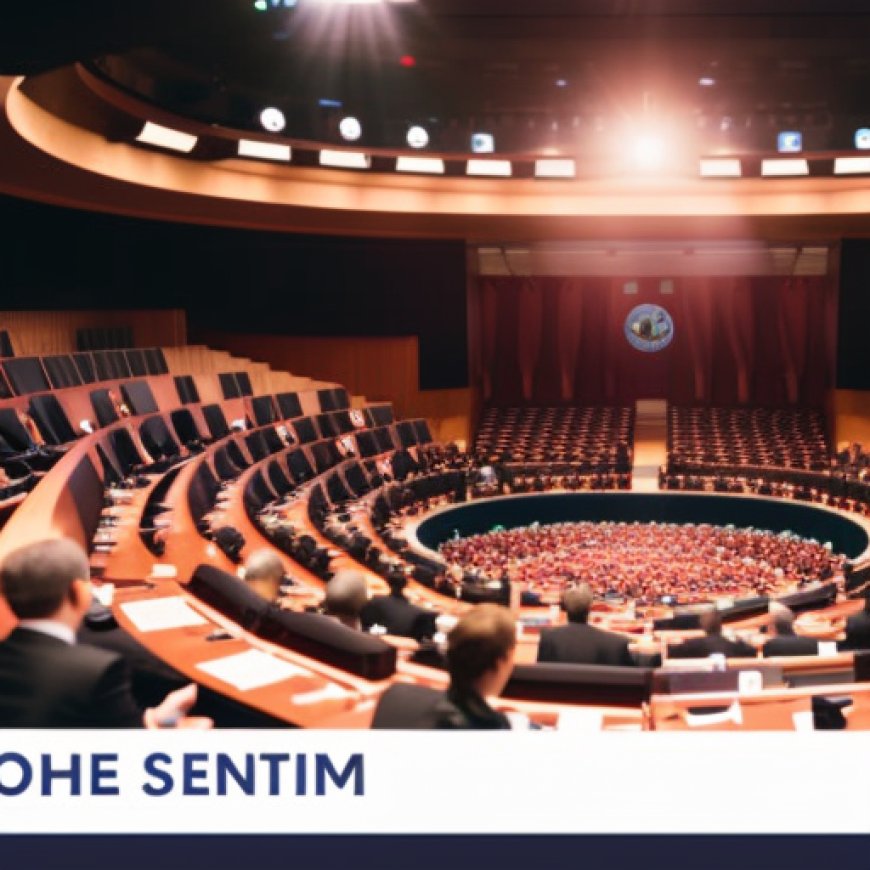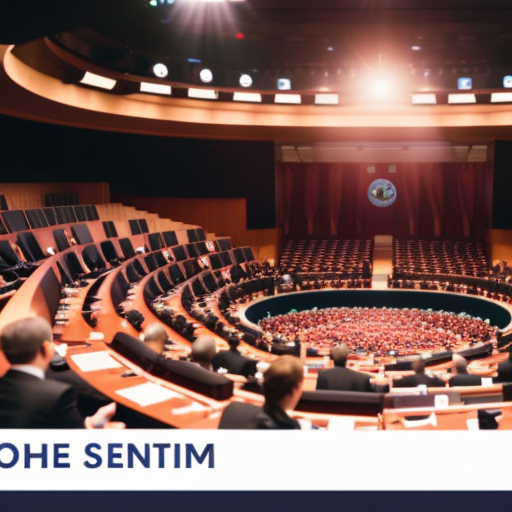(39th meeting) High-level segment of ECOSOC, 2023 Session
(39th meeting) High-level segment of ECOSOC, 2023 Session UN Web TV


Ministerial Meeting of the High-Level Political Forum on Sustainable Development
Convened under the auspices of the Economic and Social Council – Item 5 (a)
- Continuation of the general debate “Building momentum towards the SDG Summit”
The theme will be “Accelerating the recovery from the coronavirus disease (COVID-19) and the full implementation of the 2030 Agenda for Sustainable Development at all levels”.
In the forum, participants will be able to further discuss the effective and inclusive recovery measures to address the impacts of the COVID-19 pandemic on the Sustainable Development Goals (SDGs) and explore actionable policy guidance for the full implementation of the 2030 Agenda and the SDGs at all levels.
The High-Level Political Forum (HLPF) in 2023, without prejudice to the integrated, indivisible, and interlinked nature of the SDGs, will also review in-depth the following goals:
- Goal 6: Clean water and sanitation
- Goal 7: Affordable and clean energy
- Goal 9: Industry, innovation, and infrastructure
- Goal 11: Sustainable cities and communities
- Goal 17: Partnerships for the Goals
The following 40 presenters will carry out voluntary national reviews (VNRs) of their implementation of the 2030 Agenda in the forum:
- Bahrain
- Barbados
- Belgium
- Bosnia and Herzegovina
- Brunei Darussalam
- Burkina Faso
- Cambodia
- Canada
- Central African Republic
- Comoros
- Chile
- Croatia
- Democratic Republic of the Congo
- European Union
- Fiji
- France
- Guyana
- Iceland
- Ireland
- Kuwait
- Liechtenstein
- Lithuania
- Maldives
- Mongolia
- Poland
- Portugal
- Romania
- Rwanda
- Saudi Arabia
- Singapore
- Slovakia
- St Kitts & Nevis
- Syrian Arab Republic
- Tajikistan
- Timor-Leste
- Turkmenistan
- United Republic of Tanzania
- Uzbekistan
- Vietnam
- Zambia
The High-Level Political Forum (HLPF) in July will also support the mid-term review of the implementation of the SDGs and the preparations for the 2023 SDG Summit – the HLPF to be convened under the auspices of the General Assembly in September 2023.
SDGs, Targets, and Indicators
-
SDGs Addressed or Connected to the Issues
- SDG 3: Good Health and Well-being
- SDG 6: Clean Water and Sanitation
- SDG 7: Affordable and Clean Energy
- SDG 9: Industry, Innovation, and Infrastructure
- SDG 11: Sustainable Cities and Communities
- SDG 17: Partnerships for the Goals
The article mentions the impacts of the COVID-19 pandemic on the Sustainable Development Goals (SDGs) and highlights the need for recovery measures. It also specifically mentions the review of Goals 6, 7, 9, 11, and 17 at the High-Level Political Forum on Sustainable Development (HLPF) in 2023.
-
Specific Targets Based on the Article’s Content
- Target 3.8: Achieve universal health coverage, including financial risk protection, access to quality essential health-care services, and access to safe, effective, quality, and affordable essential medicines and vaccines for all.
- Target 6.1: By 2030, achieve universal and equitable access to safe and affordable drinking water for all.
- Target 7.2: By 2030, increase substantially the share of renewable energy in the global energy mix.
- Target 9.1: Develop quality, reliable, sustainable, and resilient infrastructure, including regional and transborder infrastructure, to support economic development and human well-being, with a focus on affordable and equitable access for all.
- Target 11.3: By 2030, enhance inclusive and sustainable urbanization and capacity for participatory, integrated, and sustainable human settlement planning and management in all countries.
- Target 17.16: Enhance the global partnership for sustainable development, complemented by multi-stakeholder partnerships that mobilize and share knowledge, expertise, technology, and financial resources.
The identified targets are directly related to the SDGs mentioned in the article. They address the need for universal health coverage, access to safe drinking water, renewable energy, sustainable infrastructure, inclusive urbanization, and global partnerships.
-
Indicators Mentioned or Implied in the Article
- Indicator 3.8.1: Coverage of essential health services
- Indicator 6.1.1: Proportion of population using safely managed drinking water services
- Indicator 7.2.1: Renewable energy share in the total final energy consumption
- Indicator 9.1.1: Proportion of the rural population who live within 2 km of an all-season road
- Indicator 11.3.1: Ratio of land consumption rate to population growth rate
- Indicator 17.16.1: Number of countries reporting progress in multi-stakeholder development effectiveness monitoring frameworks
The article does not explicitly mention indicators, but based on the identified targets, these indicators can be used to measure progress towards achieving the targets. They provide specific metrics to assess the coverage of essential health services, access to safe drinking water, renewable energy share, proximity to infrastructure, land consumption rate, and progress in multi-stakeholder partnerships.
Table: SDGs, Targets, and Indicators
| SDGs | Targets | Indicators |
|---|---|---|
| SDG 3: Good Health and Well-being | Target 3.8: Achieve universal health coverage, including financial risk protection, access to quality essential health-care services, and access to safe, effective, quality, and affordable essential medicines and vaccines for all. | Indicator 3.8.1: Coverage of essential health services |
| SDG 6: Clean Water and Sanitation | Target 6.1: By 2030, achieve universal and equitable access to safe and affordable drinking water for all. | Indicator 6.1.1: Proportion of population using safely managed drinking water services |
| SDG 7: Affordable and Clean Energy | Target 7.2: By 2030, increase substantially the share of renewable energy in the global energy mix. | Indicator 7.2.1: Renewable energy share in the total final energy consumption |
| SDG 9: Industry, Innovation, and Infrastructure | Target 9.1: Develop quality, reliable, sustainable, and resilient infrastructure, including regional and transborder infrastructure, to support economic development and human well-being, with a focus on affordable and equitable access for all. | Indicator 9.1.1: Proportion of the rural population who live within 2 km of an all-season road |
| SDG 11: Sustainable Cities and Communities | Target 11.3: By 2030, enhance inclusive and sustainable urbanization and capacity for participatory, integrated, and sustainable human settlement planning and management in all countries. | Indicator 11.3.1: Ratio of land consumption rate to population growth rate |
| SDG 17: Partnerships for the Goals | Target 17.16: Enhance the global partnership for sustainable development, complemented by multi-stakeholder partnerships that mobilize and share knowledge, expertise, technology, and financial resources. | Indicator 17.16.1: Number of countries reporting progress in multi-stakeholder development effectiveness monitoring frameworks |
Behold! This splendid article springs forth from the wellspring of knowledge, shaped by a wondrous proprietary AI technology that delved into a vast ocean of data, illuminating the path towards the Sustainable Development Goals. Remember that all rights are reserved by SDG Investors LLC, empowering us to champion progress together.
Source: media.un.org

Join us, as fellow seekers of change, on a transformative journey at https://sdgtalks.ai/welcome, where you can become a member and actively contribute to shaping a brighter future.







